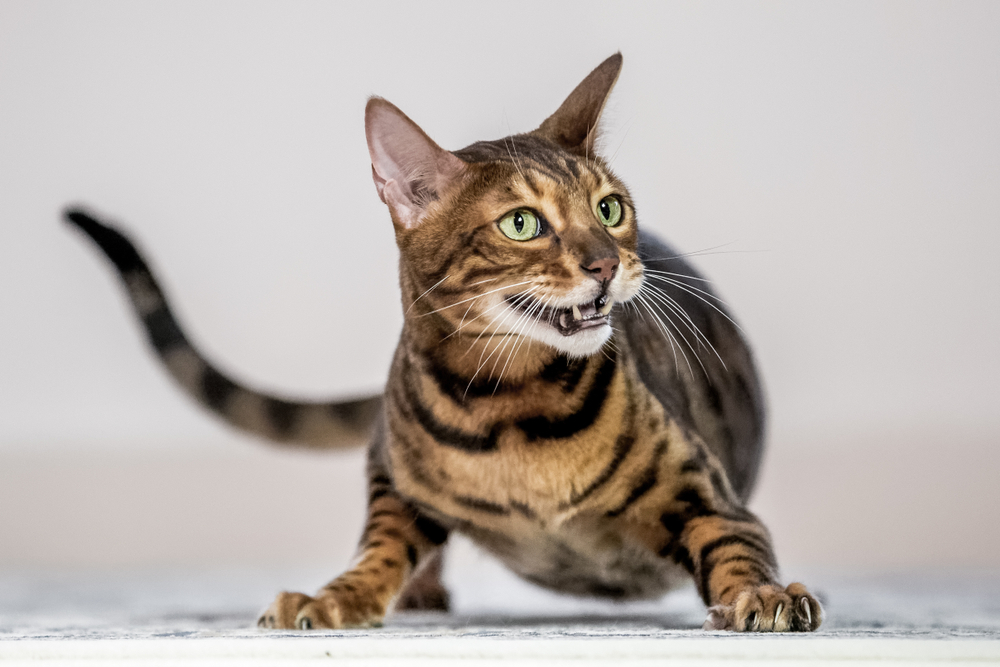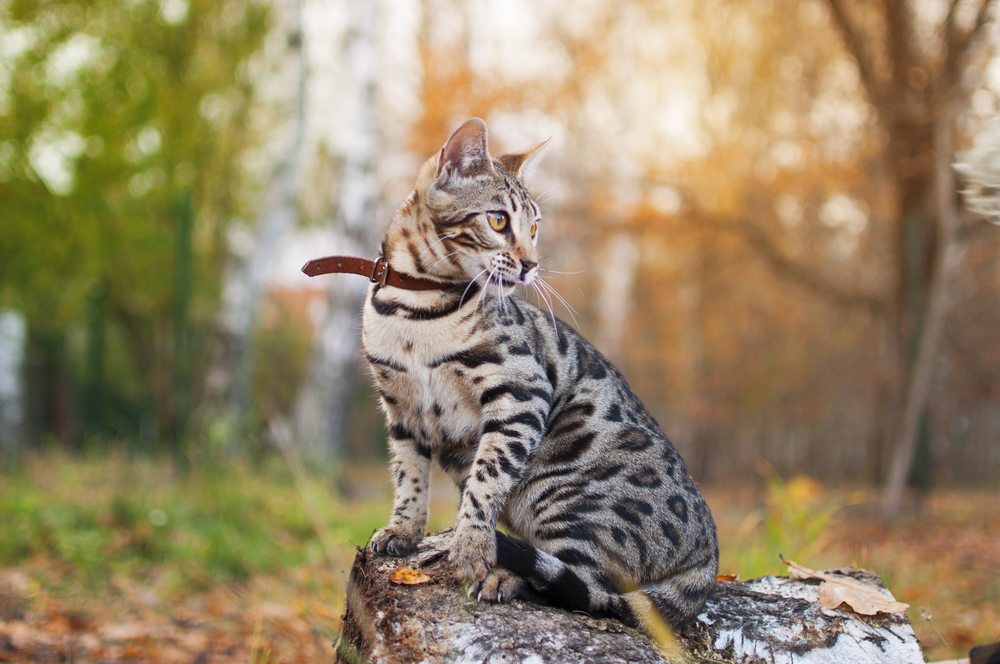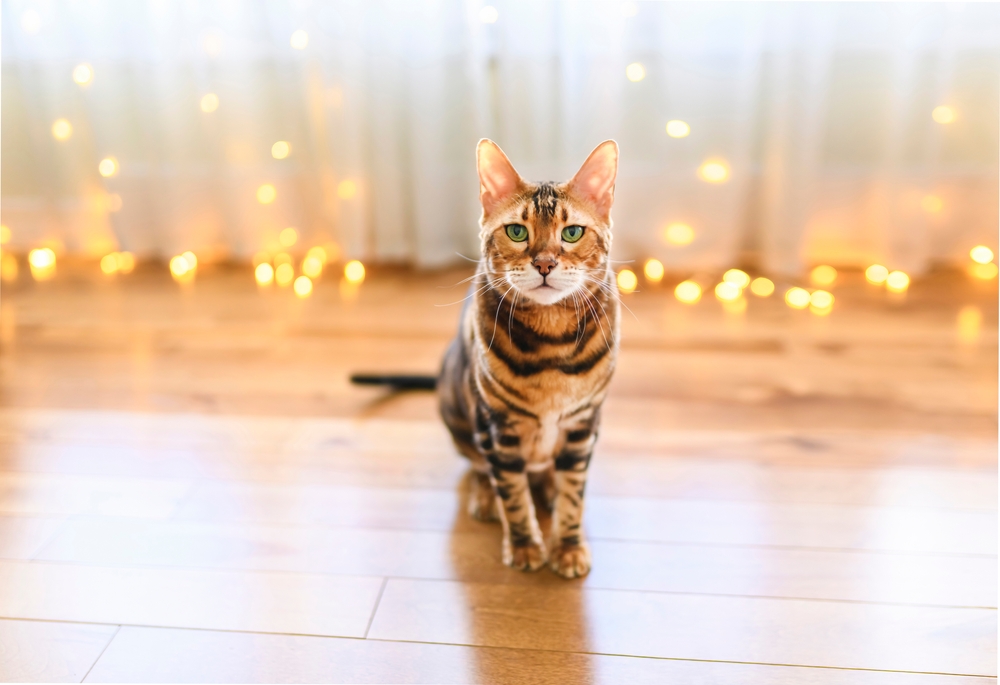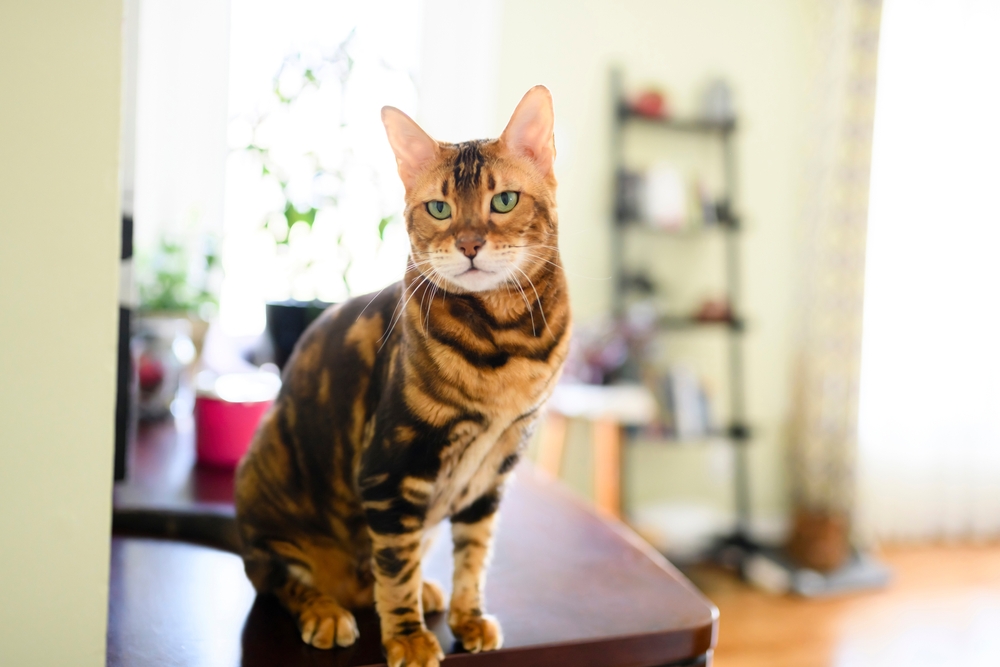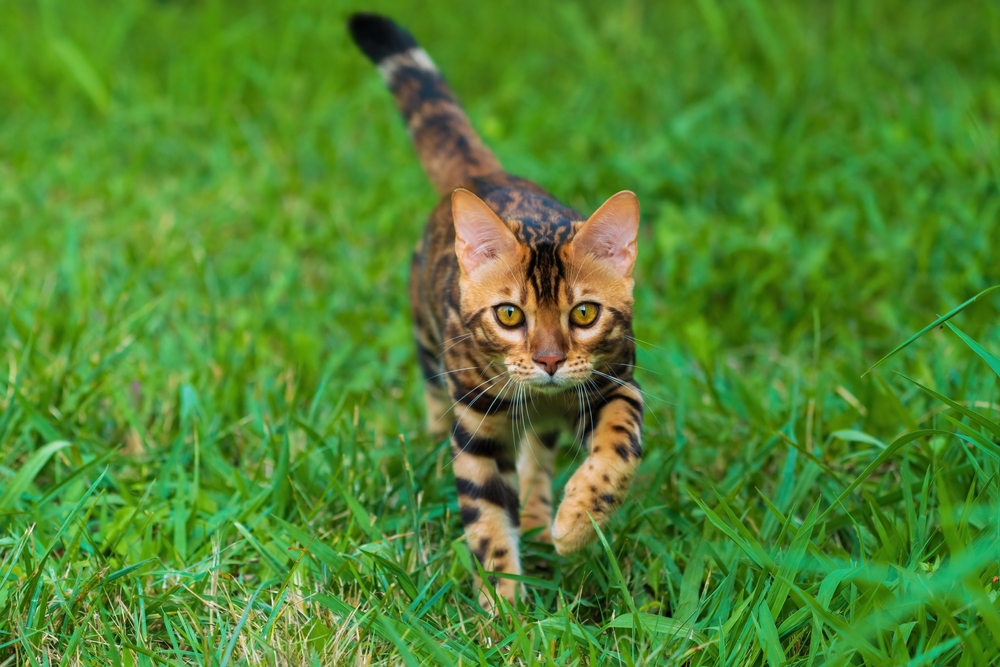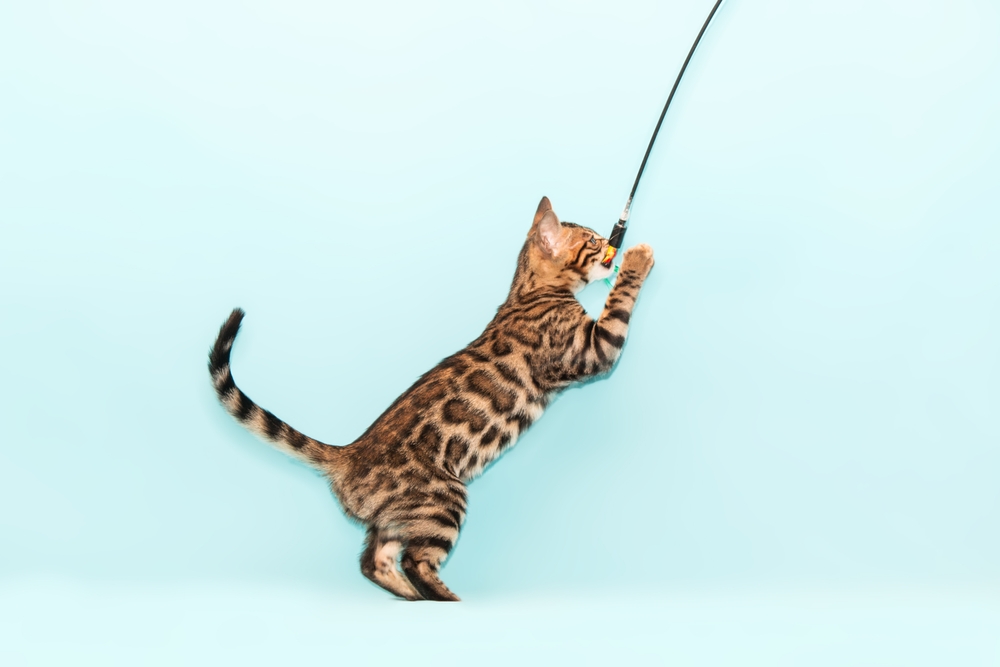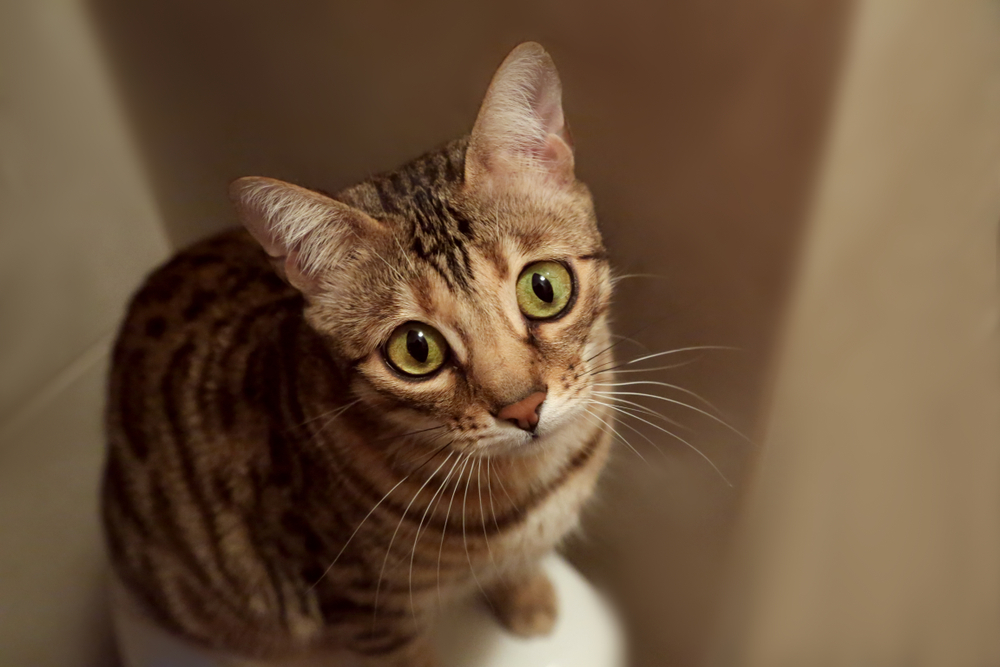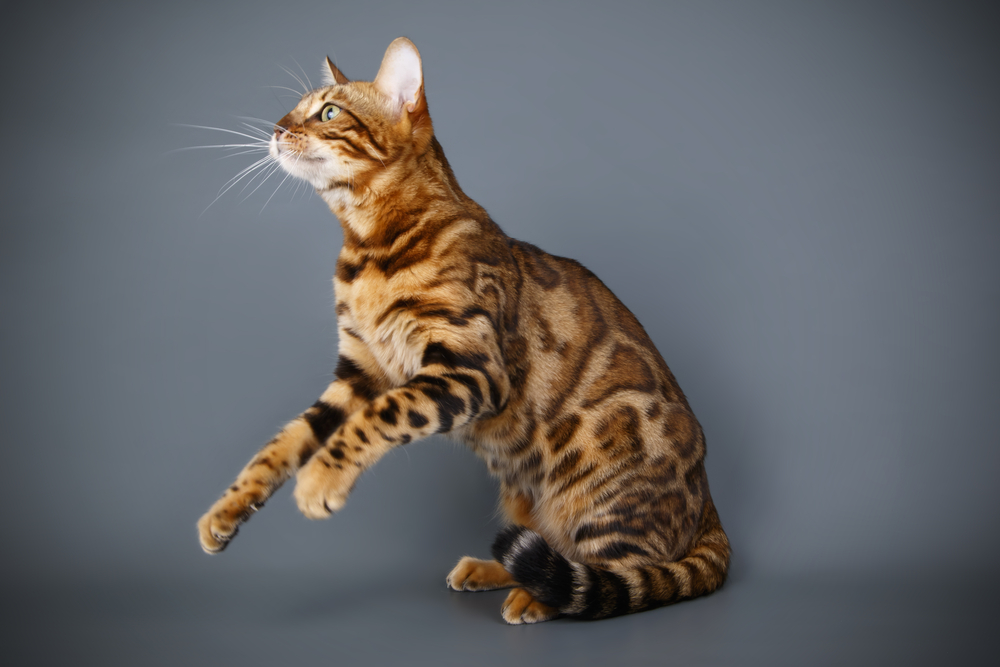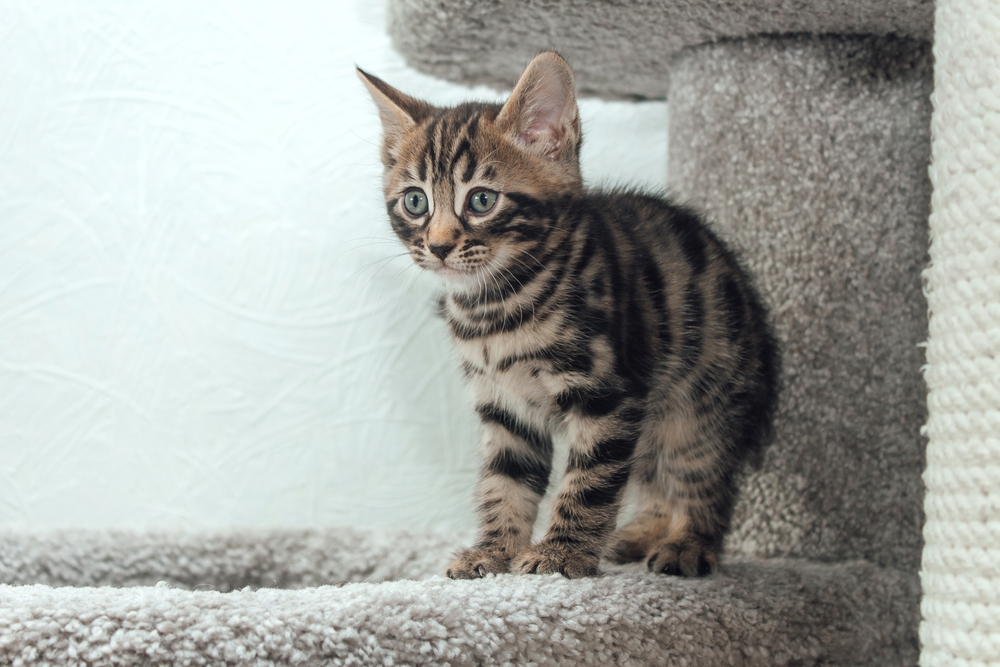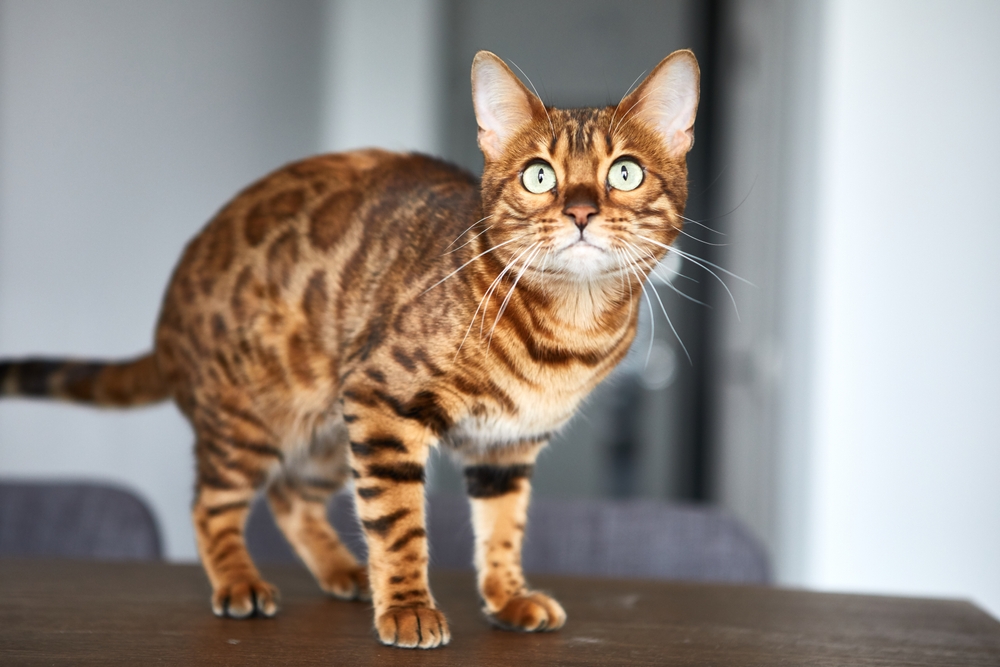📖 Table of Content:
Bengal cats are a sight for sore eyes. They’re absolutely mesmerizing!
If you ever wanted to own a mini leopard, maybe we finally found a way to make your dreams come true. Well, a little Bengal kitten would make a great addition to your family if you’re able to run along with her mischievous behavior and abandonment issues.
Do you want to welcome this wildly gorgeous but also wildly active cat into your home? Well, then, in this article, we’ll give all the information you need to know before you decide to take that step.
History of Bengal Cats
During the early 1900s, breeders crossed the regular domestic cats with Asian leopard cats. These Asian leopard cats are a very small and wild feline species that are native to Southeast Asia. They have a very slender build, and they definitely don’t look like any of the cats that you’ve seen roaming around your neighborhood.
These leopard cats are also known as Felis bengalensis, which is where the Bengal cats get their name from.
Unfortunately, even though breeders tried for decades to establish this breed, they were only able to do so around the 1970s. That’s when Jean Sugden Mill tried this for herself, and she was able to produce the first litter of this breed that still had this exotic appearance, while still being cute and cuddly like the house cats that we’re used to.
Even though today’s Bengal cats are generations away from their wild ancestors, they still have a lot of personality traits that resemble a wild animal.
Read more: 250 Beautiful Bengal Cat Names For Your Little Leopard
Ownership restrictions on Bengal cats
So, unfortunately, there are a couple of restrictions that you have to be aware of before you go out to get yourself a Bengal cat as a house pet.
A Bengal cat that’s only four generations away from its wild ancestors is still illegal in some states!
You’ll see that the American Cat Fanciers Association refers to them as F1-F4. F1 is the first generation of Bengal cats that were bred from the Asian leopard and a domestic cat. The first F1 is bred with another Bengal cat and that produced F2 and so on.
Even though most Bengal cats today are bred from other Bengal cats far from the first generation, the law is still concerned about the wild instincts these cats may still have.
That’s why it’s so important to make sure that you check the regulations of your state or country before you decide to adopt this cat. It’s important to show proof that the cat has been removed from their wild ancestors for at least four generations.
Appearance of Bengal cats
1. Large and muscular body
The coat isn’t the only thing that makes Bengal cats look like wild animals. Once you decide to adopt one, you’ll see that these half-jungle cats have a large and muscular body.
Her hind legs are responsible for her powerful stride, her high speed, and her ability to jump on anything. She’s also an amazing climber, which could create issues in a small home.
This agile breed can generally weigh between 8 and 15 pounds. Although this is the basic weight for a normal house cat, these cats are usually much larger in size because of their muscles. These muscles are the reason why you’ll find your cat staring down at you from high shelves.
Read more: Black Bengal Cat: A Domesticated Panther-Like Kitty
2. Short coat with interesting patterns
The most unique trait of Bengal cats is their wonderful coat. Your new friend will have rosette markings that are a direct ode to their wild ancestors.
You will probably see Bengal cats with rosette, marble, spotted, and striped coats. However, their official markings are marbled or spotted. Even though all of these markings have distinctive differences, they’re still outlined by black, brown, or even silver-colored coats.
Her coat is very short, so there’s not much shedding, and it’s very easy to maintain and groom.
Bengal cats also typically have white background fur on their whisker pads, inner legs, chin, abdomen, and sometimes even their chest.
Read more: Blue Bengal Cat: The Mysterious One Of The Bunch
3. Eyes
Once you look into the eyes of Bengal cats, you’ll understand why they’re so special and why so many people are mesmerized by them.
Your new family member will have green or gold eyes. Sometimes you’ll feel like she can look into your soul when she looks at you. Her eyes are in the shape of an almond, and they’re almost always lined with black, which gives them the appearance of black makeup.
If you happen to come across a snow Bengal, then her eyes will most probably be blue or blue-green.
Read more: Tabby Vs. Bengal: Are They Too Similar To Tell Apart?
The personality of Bengal cats
1. Loyal and friendly
Once you bring your new friend home, she’ll become accustomed to you, which means that she’ll be very friendly. After a while, her loyalty to you will be unmatched.
Her friendliness and loyalty will be shown through the fact that she’ll become extremely affectionate, but only with you. She won’t be too fond of strangers, which means that she could even appear shy or aggressive towards them.
However, from the very moment that she starts to understand that you’re her owner and that she’s loved and cared for, she won’t want to leave your side.
That’s when she’ll want to lay next to you while she’s sleeping, she’ll stay in your lap while you are working, and so on. Even though she’s part of a wild breed, she’ll be extremely tame with you. If you want your furry friend to cuddle with you and always be happy to see you, then this is the perfect animal for you.
However, if you have guests around quite often, or if you have a bigger family in your household, this isn’t the animal that you should consider. Why? Well, she’ll become aggressive, and her wild instincts will come to the surface if she feels threatened in any way, shape, or form. She may even try to protect you from strangers, even though you don’t need protection.
Read more: Female Bengal Cat: The Battle Between Boys And Girls
2. Extremely energetic
The high energy level combined with the muscular and agile body of Bengal cats could provide some problems for owners who can’t keep up with that.
She’ll become a menace if you’re not able to match her energy levels.
This type of cat is mostly suitable for an active household. If you’re someone who loves to go hiking, or if you love to take walks through nature, then you should always bring your cat with you. She’ll be amazing on the leash, and she’ll be able to roam around and use all of her energy productively.
You need to incorporate regular playtime for a Bengal cat either way. She’ll need to play around with toys that are safe for her, or she’ll start shredding your expensive curtains.
Also, have you ever seen what happens when a cat gets her zoomies? She’ll start to run around and jump on anything and everything. You won’t be able to catch her, and even if you do, she’ll start wiggling out of your grip. Sometimes, she may even hurt you without wanting to because she has too much energy left.
This is especially important before going to bed so that she can release all of her pent-up energy, and go to sleep without any issues. The more she’s worn out, the better she’ll sleep through the night.
Read more: How To Discipline A Bengal Cat: Tough Love Or Something Else?
3. Highly intelligent and easily trainable
Bengal cats are highly intelligent, which makes them extremely easy to train. Their big brains have to be stimulated all the time, or they may become bored and find something to play with. This usually isn’t a good thing.
The best thing you can do is try to train her from a very young age. It’s important to socialize her right away and to introduce her to all the household members.
For example, if you want to teach her to walk on a leash, then you should do that from the moment you get her. She’ll get used to it in no time! However, if you choose to do this when she’s older, it’ll be much more difficult. Older cats, just like humans, are very much set in their ways.
You will be able to train her to use her litter box while she’s still a kitten, but she’ll need some help with harder tricks. For example, you’ll have to use toys and actual training techniques to teach her how to fetch a ball, sit, or lie down.
However, once you get the gist of it, you’ll be able to teach her even more complicated tricks. She’ll know how to use the toilet, flush it, open doors, and even simply jump into a bathtub when she’s due for a wash.
There are many ways that you can train her, but you can always consult professionals in this field to give you a few pointers. Even though she’s partly a wild cat, she’ll easily pick up on queues and be able to follow commands.
4. Slightly talkative
Have you ever seen a video of a Ragdoll cat and how much they can talk? Well, Bengal cats aren’t that talkative. But they’re also not as quiet as Maine Coons can be.
This is a slightly talkative cat. She’ll start meowing when she’s bored or when she’s trying to get your attention. On the other hand, if she’s out and about, she won’t feel the need to meow without any purpose.
She’s the type of cat who doesn’t hiss when she’s in danger. Oftentimes, you’ll only see her attack right away without a warning.
Read more: 10 Bengal Cat Sounds And What They’re Trying To Say
5. Not very good with children and other pets
Bengal cats are the worst breed to bring to a big family. They’re not the best cats for homes that have elderly around, especially if you have small children.
She’s the best cat to adopt if you’re a very active couple, or if you have older children. Otherwise, she doesn’t tolerate rougher play that small children do unintentionally. She’ll attack them or hurt them in order to get her peace.
It’s also not so smart to bring her around other animals. If you have dogs, she may attack them the very moment that she feels threatened. Also, smaller cats, especially kittens, tend to play around a lot, and she won’t understand that she’s hurting them.
She’s extremely strong for a cat because of her ancestry. This makes her quite dangerous for anyone that she’s not accustomed to. She’ll make sure that she’s left alone when she wants to be by herself, but she won’t hold back when she feels threatened.
If you have hamsters or even fish, her instincts can kick in and make her take their lives. This isn’t to say that all Bengal cats are like this, but the majority are, so you have to be extremely cautious.
She’s friendly and fiercely loyal if you’ve earned her respect.
Read more: Are Bengal Cats Hypoallergenic? Will These Make You Sneeze?
Diet and nutrition
Just like with any other animal, it’s important to talk to your veterinarian about their diet and specific nutritional needs.
However, Bengal cats eat what any other cat would eat – which is simple cat food. This generalization could become tricky depending on the generation of your cat.
The first few generations are fed a strict diet of raw meat. Many owners prefer to go out and buy prepared cat food in the store and give that to their furry friends. Bengal cats are different and you have to be aware of that.
You should always incorporate at least some type of raw meat into her diet if you want to keep her healthy and happy. Otherwise, she’ll look for those things elsewhere, which can become tricky over time.
Either way, her diet should consist of wet and dry food. The combination of these two is important for her gut health and proper digestion. Also, dry food is good for their dental health.
At the end of the day, you have to understand that cats are carnivores. They can’t survive on a vegan or vegetarian diet! You may think that this is common knowledge, but you’d be surprised how many people in this world have tried that.
You can introduce certain veggies into her diet for better digestion, but you have to do extensive research to make sure that she can eat it. For example, if you’re not aware of this until now, onions and garlic are extremely poisonous for cats. So, make sure to do your research.
Grooming
This mesmerizing animal has a short coat that doesn’t shed much, which means that you won’t have too much work when it comes to grooming. However, there are still some rules that have to be followed when it comes to Bengal cats.
It’s important to brush her coat once a week. Even though it’s short, it’s good to prevent unnecessary hairballs, or any type of dirt from accumulating on her fur.
Also, you need to bathe her at least once a month. These cats aren’t afraid of water which makes it easy to give them a bath without any issue.
Every couple of weeks, make sure to trim her claws. This means that you’ll put her in a comfortable position, and you’ll trim her claws without hurting any blood vessels. The most important thing here is to do this from a very young age so that she can get accustomed to this process.
If you don’t want to deal with all of this by yourself, you can always take your feline friend to a professional groomer. That’s when you can also ask for a sanitary trim. I know that cats are able to clean themselves, but this way you’ll help her out. Also, your carpet won’t get dirty from any poo residue.
Cleaning her ears, paws, and teeth, is also important. Her ears aren’t something that she can reach, so you should give her a helping hand. Besides that, there can always be some dirt or small branches stuck between her paw pads. If you tend to take your cat outside, please make sure to check.
The teeth of Bengal cats are stronger than the teeth of other domestic cats, but that doesn’t mean that you shouldn’t clean them. Use a small brush that you’ll put on your finger, with cat-friendly toothpaste. This way you’ll prevent any dental issues from arising over time.
I would even recommend that you take her to the veterinarian to clean her teeth properly every once in a while.
Read more: Cashmere Bengal Cat: A Longhair Sibling Of Your Smart Bengal
Common health problems
As you know, purebred cats are more prone to genetic diseases, simply because they have a smaller gene pool than domestic cats. This also includes Bengal cats, because they can develop a genetic disease that the breeder didn’t tell you about earlier on.
Bengal cats also need the same immunizations and preventative health treatments as any other cat. Which is why you’ll have to take her to the veterinarian to give her the shots she needs.
The most common health problem that all cats face is hypertrophic cardiomyopathy. This is a thickening of the heart muscles, which can be deadly if it’s not caught on time. However, in the early stages of HC, you can make sure that your cat gets the proper treatment, exercise, and diet to help her deal with this. Some cats live a long and happy life with this condition.
There are some other things that you should be aware of and that’s autosomal recessive disorder, which causes early blindness in young cats. As well as entropion, which is the rolling in of the eyelids.
The only other thing that you should be aware of is dental issues. Make sure that you’re being very careful with your cat’s teeth. Bengal cats are prone to these problems like any other feline.
Dental issues are a serious problem because your cat will start avoiding food, which will make her lose weight, she’ll become lethargic, and she could even pass away as a result of that.
You don’t have to worry about any of these things whatsoever if you simply take good care of your cat, and do your research on the breeder, and Bengal cats in general.
Read more: Bengal Siamese Mix: Purrfect Blend Of Beauty And Wilderness
What to expect?
There are a couple of things that we need to talk about when it comes to the topic of Bengal cats. You can’t expect her to be just like any other domestic cat. Even if you’ve owned other cats before, this one is much different.
The legal procedure when it comes to adopting Bengal cats is much different than when you’re adopting any other breed. So be ready for that extensive process.
When you bring her home, she won’t feel comfortable right away. Especially, if she wasn’t socialized with humans. She may see everything as a threat early on, so you’ll need a lot of patience and love for her.
Bengal cats are known for being very energetic, so don’t be surprised if your new friend starts jumping around from the very moment she feels safe. You’ll probably think that this behavior will get better as she gets older, but it won’t – trust me. It’ll only get worse.
The more muscle strength she gets, the bigger her jumps will get.
Other than that, she’ll never be accepting of people that she doesn’t know. If you’re someone who likes organizing parties, this isn’t the cat for you, she’ll become traumatized or even start attacking people.
One thing that you need to know about Bengal cats is that they’re easily entertained with simple games. Even something like a laser will keep her occupied for a long time, just like any other domestic cat.
But you have nothing to worry about once she gets accustomed to you and your family. She’ll be the most loving furry friend that you could imagine. She’ll cuddle with you, sleep with you, play with you. But you’ll also be able to leave her alone in the house for a couple of hours without her making a mess.
I would still recommend getting some cameras installed to keep a closer eye on her.
Read more: Fierce And Fabulous: Your Exotic Bengal Savannah Mix
